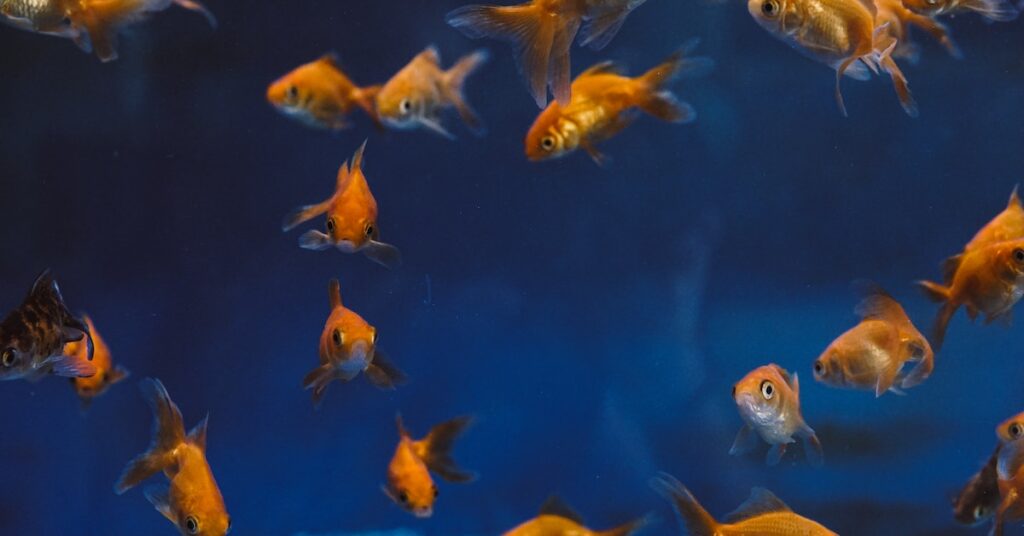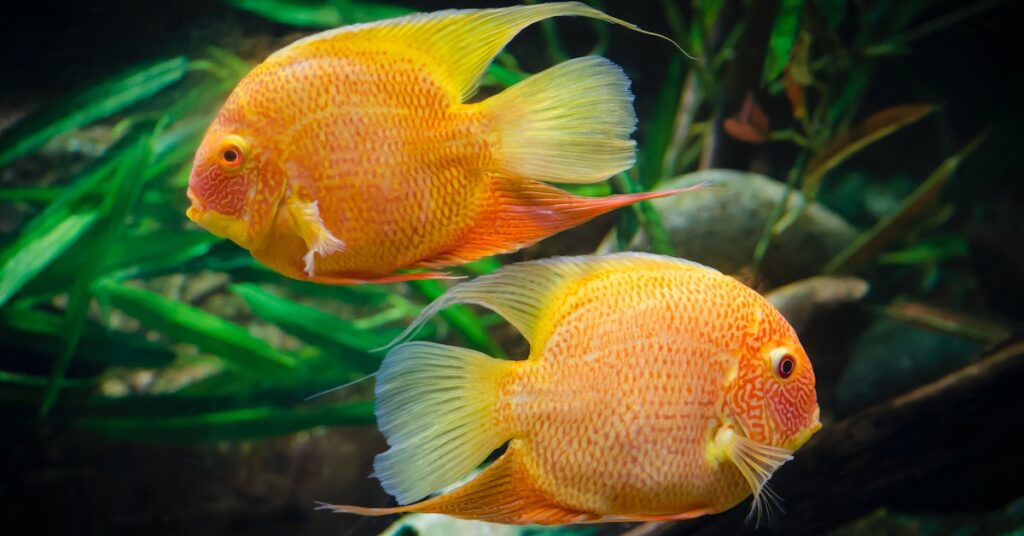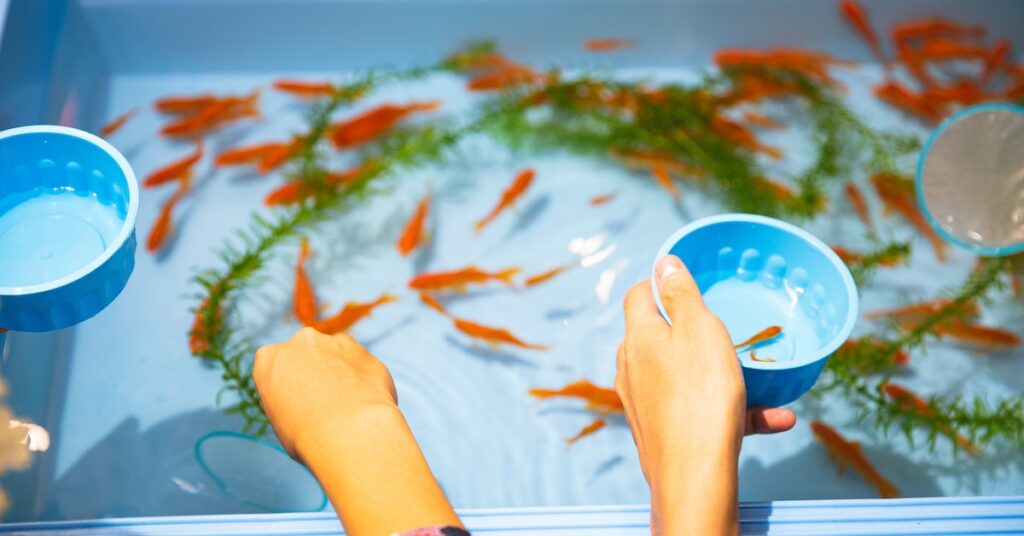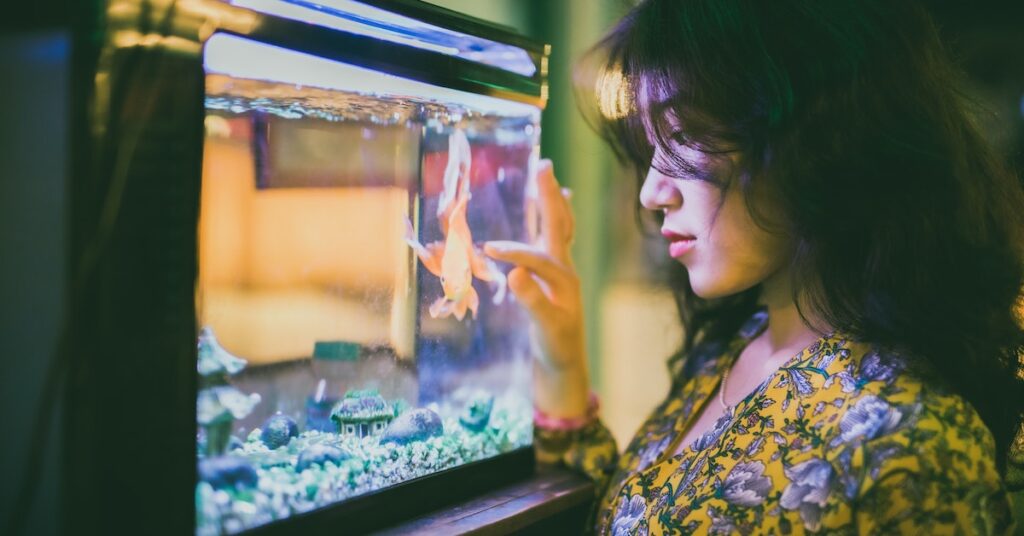Whether you bought your goldfish from a pet store or you raised it in your home, there are a few things you should know about them. This article will go over important topics, including feeding healthy food, maintaining a regular wake and sleep cycle, and changing the water parameters in the tank. In addition, you should also know how to spot and treat waterborne illnesses, such as water poisoning. Fortunately, you can diagnose goldfish illnesses early on, if you’re unsure of their symptoms.
Maintaining a healthy water environment
Goldfish thrive in consistently clean, uncluttered water. In nature, goldfish spend 90% of their time swimming. The vast water volume and helpful bacteria in their natural environment dilute these toxins and make them less harmful to goldfish. Unfortunately, home aquariums do not have the space to cycle water enough and their water can become dirty very quickly. As a result, you should constantly test the water quality to ensure your goldfish remain healthy. In addition, it is important to keep your goldfish’s substrate clean by vacuuming up uneaten food and removing any dirt that may have collected on it.
The most important step in maintaining a goldfish tank is to test its water periodically. Ammonia and nitrite levels drop when the water is cleaned, whereas nitrate levels decrease when there are nitrifying bacteria in the water. Partial water changes are also helpful in lowering ammonia levels, but they should be done regularly and at least once a week. In case of suspected problems, always test the water before making any water changes. This could save your goldfish’s life!
Keeping the pH level of your goldfish aquarium at an ideal level is vital for maintaining your goldfish’s health. Goldfish prefer higher alkalinity than acidity. If your goldfish are new to the aquarium, you should quarantine them before putting them into their new home. Live plants are an excellent source of food, but it is best to avoid the use of plastic decorations, as these can introduce harmful substances into the goldfish’s water. A freshwater aquarium supply company can assist you in choosing plants and decor that are appropriate for your goldfish’s needs.
Read more about 6 Best Aquarium Filter, You may Buy One
Maintaining a healthy wake/sleep cycle
A healthy wake/sleep cycle is important to the health of goldfish. Goldfish sleep at night but do not enter REM sleep. This means they are awake all day but sleep during the night. To encourage your goldfish to sleep, turn off the light for at least 12 hours every day. Goldfish also form loose groups. A goldfish that isn’t getting enough sleep will become less active throughout the day.
Your goldfish needs sleep to replenish its energy and maintain good health. The amount of sleep your fish requires is individual and depends on the species. Some fish sleep only during the day and others stay up until late at night. Make sure your fish is given a consistent day/night schedule so it doesn’t become stressed. A healthy wake/sleep cycle for goldfish also provides them with a consistent diet.
To maintain a healthy sleep/wake cycle for your goldfish, first, make sure the aquarium has a dark place. Goldfish like a dark environment, so turn off the lights for at least 12 hours each day. Keep in mind that goldfish do not necessarily sleep at night, but they do like to rest and refresh themselves. A dim light is also ideal for sleep.
Read more about The Coolest Freshwater Aquarium Fish
Changing the water parameters in the tank
Changing the water parameters in the tank to keep goldfish healthy is crucial. Even if your fish is kept in a planted tank, it is still necessary to change the water every week. Plants provide your fish with hiding places and can keep the tank clean. A weekly partial water change is the primary method of water quality control. There are, however, additional factors to consider. If you are considering adding plants to your goldfish’s tank, you should also consider adding them.
Goldfish are tolerant of pH variations, but they do not tolerate pH levels higher than 7.6. Therefore, you should check the pH level of your tap water and use a water conditioner to lower the pH. Also, you should remove any toxic chemicals in tap water before adding your goldfish. Keeping the pH level at a stable level will help your goldfish grow and develop properly.
You should change the water in the goldfish’s tank at least once a week. This is a crucial step because goldfish produce a large amount of waste. If you neglect the water cleaning process, your fish could end up suffering. In addition, you should scrub the aquarium’s walls with a cleaning magnet. You can also siphon out the water in order to remove algae and treated water.
Read more about How to Take Care of Fish in an Aquarium While on Vacation
Adding plants to the tank
Adding plants to a goldfish tank is one of the easiest ways to help your goldfish stay healthy. The plants will absorb waste and excess nutrients from the water, acting as biofilters. Goldfish also deposit food in the gravel around the base of the plants, where it will decompose over time and help keep the substrate healthy. In addition to these benefits, plants will also reduce the stress your goldfish feel by adding a natural source of oxygen to their tank.
Java fern: A fern that grows on bogwood or terracotta sticks is perfect for a goldfish aquarium. Java ferns are hardy and will survive the fish’s aggressive digging behavior. It’s best to purchase Java fern plants that come already attached to bogwood or tie them to terracotta sticks with a fishing line. Once your goldfish are used to the fake plants, you can gradually introduce live plants to the tank.
Pothos plant: Another low-maintenance plant that can provide your goldfish with an abundant source of oxygen is an excellent choice. Pothos plants are often used as sacrificial plants in aggressive goldfish tanks because they don’t require much care and will grow rapidly. If you’re worried about the maintenance of plants, try a few different species. They’ll likely enjoy your goldfish’s company and will look beautiful in your tank.
Read more about Reasons Why Your Betta Fish Lays on Bottom of Tank
Changing the water once a fortnight
Goldfish produce a lot of waste and ammonia in their tank. Changing the water of your goldfish once a fortnight helps to keep the waste to a minimum. The nitrogen cycle converts these harmful components into less toxic nitrate, but it is still important to change the water regularly to prevent nitrate poisoning. Changing the water of goldfish once a fortnight helps to remove the harmful waste while adding fresh minerals to the tank.
Changing the water of goldfish once o a fortnight is an important task for any goldfish owner. The process may not seem glamorous, but it is an essential part of keeping goldfish in good health. It doesn’t have to be difficult and you can even purchase a water-changing system like Python to save yourself from the hassle of lifting heavy buckets of water.
The pH level of the tank should be between seven and eight. If the water is too acidic or alkaline, try changing the water more often. To do this, you need to do a water test. You can purchase a water test kit at a local pet store or online. To conduct a test, simply fill your tank with fresh water and a few drops of conditioner.







